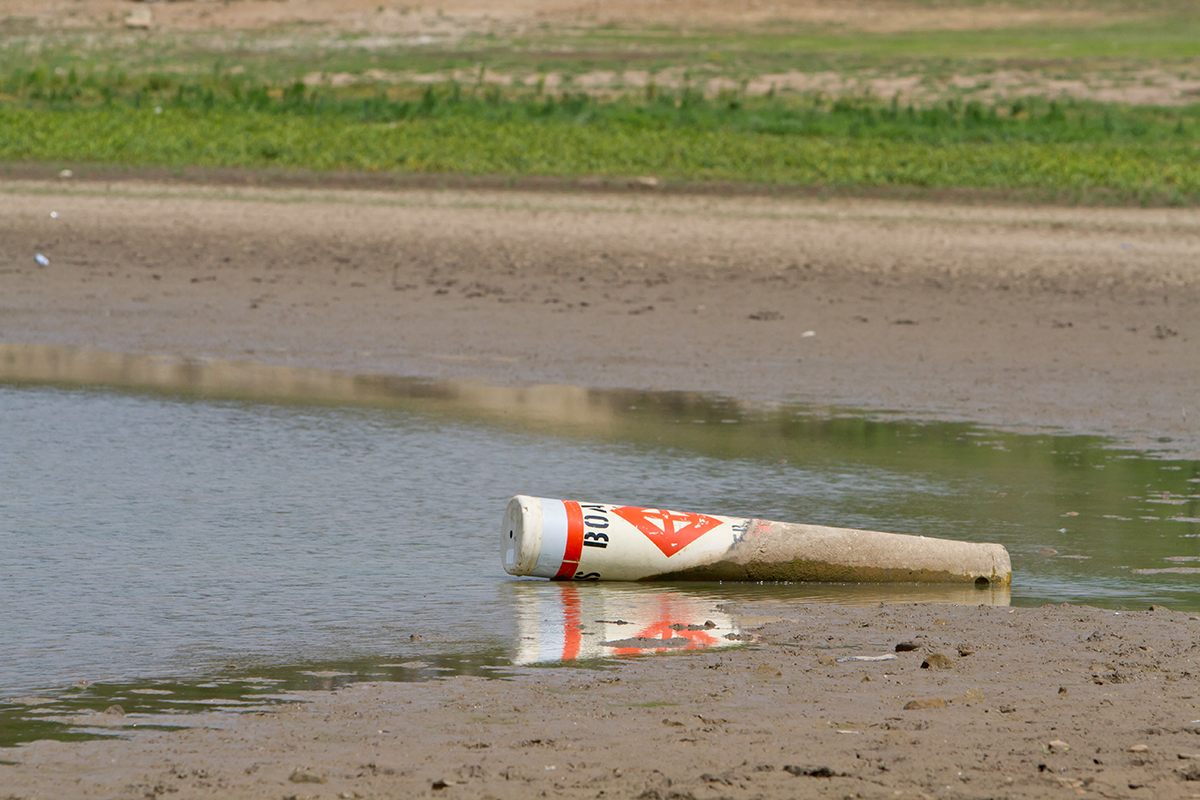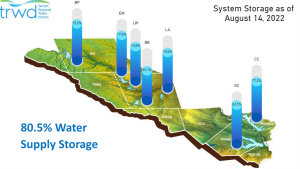
While last week’s rain was a welcome sight and provided our lawns some much-needed relief, it didn’t make a significant impact on the District’s lake levels or overall water supply.
North Texas soils are still very dry from the current drought conditions and it will take several, sustained rainfall events to saturate the soil to the point where we see run-off into rivers, creeks and streams, which eventually flow into the lake.
As of Aug. 16, TRWD’s total water supply remains at approximately 80 percent capacity, and all of our lakes continue feel the effects of the drought and blazing heat. Two significant factors that have made an impact on water levels at all District lakes this summer are higher than normal demands and temperatures.

TRWD supplies raw water to more than 70 North Texas cities, including most of rapidly-growing Tarrant County. The population in our 11-county service area is now 2.3 million people and that number is rising daily as the region continues to see unprecedented growth.
With more homes and businesses for our wholesale customers to serve, TRWD’s daily demands have increased significantly over the last two months. In fact, demands reached an all-time daily record of 637 million gallons a day (MGD) on July 27. Over the past few weeks, demands have routinely ranged between 550 and 630 MGD and, as a result, the District saw the highest usage in the months of May and July…ever.
Another major factor impacting lake levels is evaporation. With searing hot temperatures this summer that have routinely reached 100 degrees or higher, District lakes can lose up to an inch a day in evaporation. That’s up to seven inches a week and 28 inches a month.
The good news is last week’s rainfall and cooler temperatures have slowed demands and evaporation, and hopefully, signals the beginning of the end of 100 degree temperatures and high demands.
Until then, TRWD encourages residents and businesses to continue their good work in conserving water and be mindful that drought conditions may persist for the foreseeable future.
Water-saving tips and information on drought restrictions can be found on Save Tarrant Water’s website at savetarrantwater.com.


